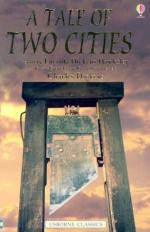|
This section contains 432 words (approx. 2 pages at 400 words per page) |

|
1780s: At the end of the period known as the Enlightenment, most educated people believed that the universe was essentially knowable and operated by fixed laws capable of being understood by human beings.
1850s: With the publication of Charles Darwin's The Origin of Species (1859), conservative Victorians launched a backlash of religious fervor that spoke against scientific progress.
Today: With technological advances such as space travel and cloning, modern science appears to be able to correct almost any problem. As specialization within science increases, however, few people can know very much about a variety of sciences.
1780s: French thinkers and philosophers such as the Marquis de Montesquieu recommended an enlightened system of government with powers balanced and divided among different bodies.
1850s: After decades of political stagnation, England began to liberalize its franchise by extending the right to vote to all male citizens regardless of...
|
This section contains 432 words (approx. 2 pages at 400 words per page) |

|




